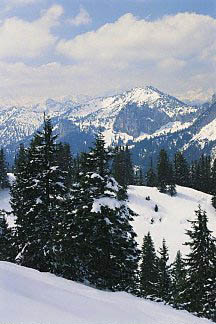Use Your Head!
 Wear a Helmet When Skiing or Snowboarding Wear a Helmet When Skiing or Snowboarding
The U.S. Consumer Product Safety Commission (CPSC) is recommending skiers and snowboarders wear helmets to help prevent head injuries from falls and collisions. In a recent study, the CPSC concluded that helmet use by skiers and snowboarders could prevent or reduce the severity of 44 percent of head injuries to adults and 53 percent of head injuries to children under the age of 15. The proportion of head injuries that result from skiing and snowboarding is higher in children than in any other age group. |
Through the local coalitions of the National SAFE KIDS Campaign, many communities have programs that help families obtain discounted ski/snow helmets. For information on local programs, find the coalition near you. |
The CPSC estimates that 7,700 head injuries- including 2,600 head injuries to children- could be prevented or reduced in severity each year by using skiing or snowboarding helmets.
The Right Fit – Choosing a Helmet
When selecting a helmet, make sure it fits properly and is comfortable. Helmets shouldn’t be too snug or tight, and there shouldn’t be too much room on the sides. If your helmet doesn’t fit correctly, it won’t protect you properly. Helmets should:
- Cover the front of your forehead, back of your head, temples and ears
- Keep your field of vision clear
- Allow you to wear you ski goggles
- Allow you to hear clearly
- Have an adjustable chin-strap
- Allow good ventilation
How to Prevent Ski Injuries
In addition to wearing helmets, follow these safety tips when skiing:
- Ski on trials
- Ski with a partner
- Ski under control (slow down)
- Know who is skiing near you
- Know the snow conditions and conditions of the slopes
- Use properly maintained equipment
- Replace helmets after children grow significantly
- Make sure you have proper training, and don’t ski beyond you ability
- Avoid skiing after drinking alcohol, using medication, or taking any type of drug
- Wear warm, close-fitting clothing. Loose clothing can become entangled in lifts, tow ropes and ski poles.
For more information:
Go to the Sports Medicine health topic.